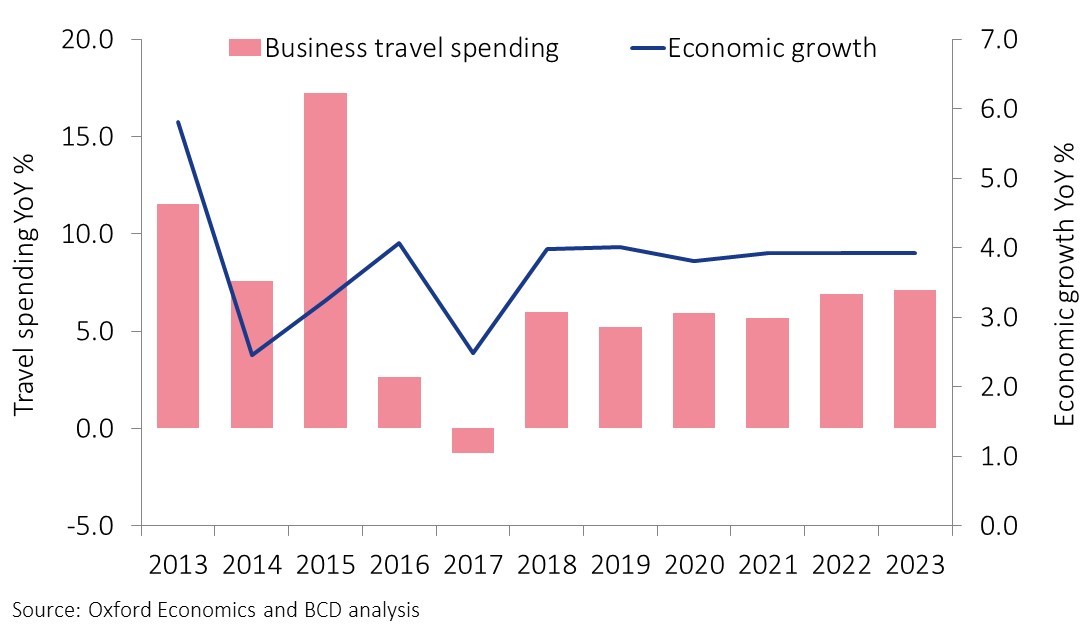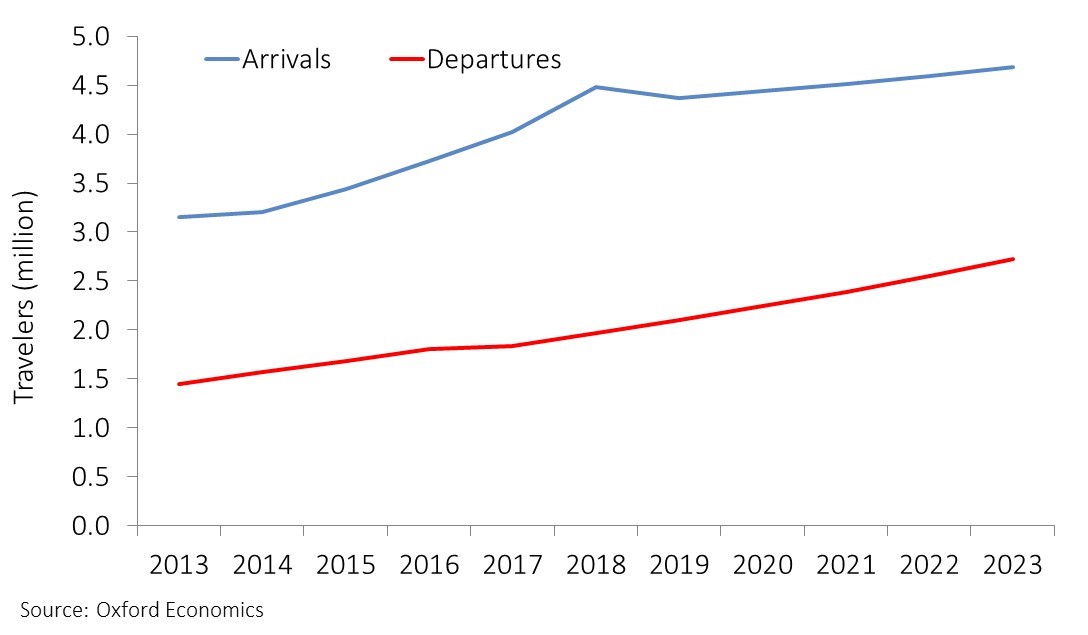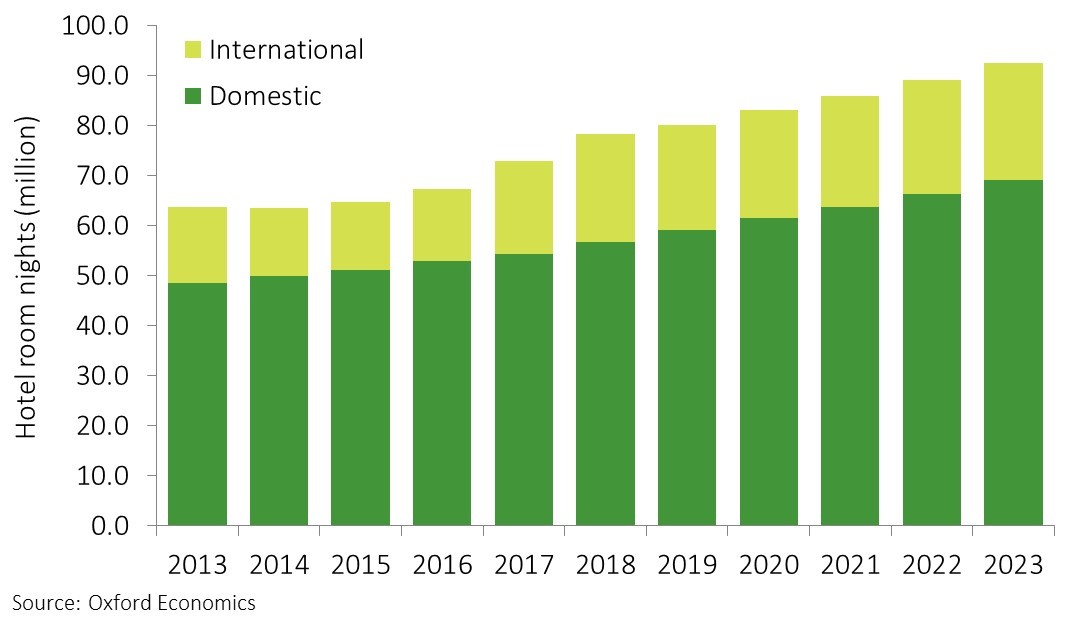
Chile and the U.S. lead inbound travel to Latin America’s fifth-largest economy.
Peru’s corporate travel market was worth approximately US$3.6 billion (12 billion Peruvian sols) in 2018. Domestic business trips made up more than half of travel spending, and Peruvians’ international business trips abroad accounted for 27%. Inbound travel made up the rest. Between 2013 and 2018, overall business travel spending grew 6.3% a year, on average; spending on international trips grew almost 13% annually. Overall spending is expected to grow about 6% a year through 2023. Gross domestic product (GDP) grew 4% in 2018. Oxford Economics forecasts the same growth for 2019.
Download the 2019 Industry Forecast, with region-specific reports and infographics available in six languages. Ask how BCD Travel can help you get travelers to emerging and established markets all over the world.
Economic environment
Economic growth and business travel spending
Click on image to enlarge
- Peru is Latin America’s fifth-largest economy and 50th in the world, ranking close to Portugal and Greece.
- Minerals mining makes up about a quarter of economic output, with copper and silver in the lead.
- Services account for 60% of output and employment. Telecommunications and financial services comprise two-thirds of the sector.
- Private investment, manufacturing and exports are expanding, laying the foundation for solid economic growth. But the economy is vulnerable to swings in commodity prices.
- The government’s anti-corruption efforts are broadly supported by the public. Interest-rate and tax policies have fostered growth, although their effects will fade.
- As the 2021 presidential election approaches, rising uncertainty could dampen growth. Economists are predicting 3.8% expansion in 2020.
Air
International travel
Click on image to enlarge
- Between 2013 and 2018, international travel to and from Peru expanded by 7% per year. Through 2023, annual growth is expected to shrink to 2.8% as arrivals slow.
- More than a quarter of overnight visitors to Peru arrive from Chile. The U.S. is the second-largest inbound market, and its share of the inbound market is forecast to rise to 18%. Many visitors also come from Ecuador, Colombia and Spain.
- Peruvians’ Top 3 destinations are Chile (20% of outbound trips and growing), the U.S. and Ecuador. Ecuador is expected to replace the U.S. as the second-largest outbound market by 2023.
- LATAM dominants the air market, accounting for more than half of departures from Lima, Cusco and Arequipa.
- Air competition waned in recent years after the collapse of LC Peru and Avianca’s reduction in operations. But Chilean Sky Airline has entered the low-cost carrier market to compete with Viva Air Peru on domestic routes.
- Peruvian Airlines and Star Peru plan to merge. Together, they held 20% of the market in 2018.
Accommodation
Hotel demand
Click on image to enlarge
- Demand for hotel accommodation in Peru increased 23% between 2013 and 2018, averaging growth of 4.2% per year.
- Annual growth is forecast to slip to 3.4% through 2023, due largely to a slowdown in international demand.
- Peruvian company Casa Andina Hotels is the largest chain. It operates 29 hotels across 17 cities and towns. Its Premium brand hotels target corporate travelers in Peru’s major cities: Arequipa, Cusco, Lima, Piura, Puno, Trujillo and Urubamba.
- Wyndham is the largest global chain with an upscale offering of 13 hotels across the Dazzler, Esplendor and Wyndham brands, as well as two midscale Ramada properties.
- Supply is improving, with global chains Hilton, IHG, Radisson Hotel Group and Accor all planning new hotels, mostly in Lima.




